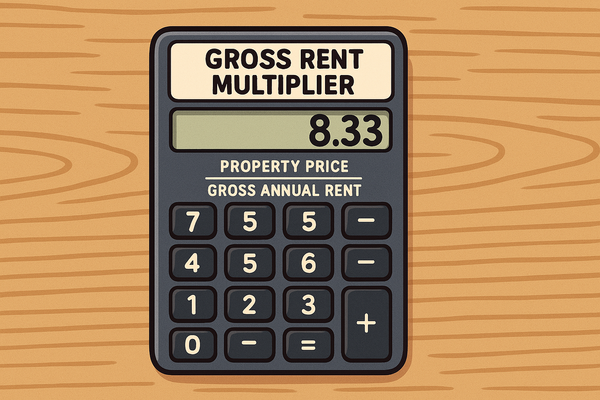Colorado Squatter's Rights Guide: SB 18-015, and Property Protection Strategies
In Colorado, squatters must maintain continuous possession for 18 years—one of the longest requirements nationwide. Any significant interruption restarts this timeline.

If you own property in Colorado, understanding squatter laws is essential to protecting your investment, which is probably why you're here reading this (thanks for stopping in). This guide explores Colorado's adverse possession law, recent legislative changes, and practical strategies to prevent unauthorized occupation of your property.
Noteworthy Regulatory Insight: While 97% of Colorado residents believe squatters should be removed immediately, the law actually requires a formal process—creating a striking difference between public opinion and real-world legal requirements in the Centennial State.
Understanding Colorado's Adverse Possession Law
Colorado's adverse possession law establishes the conditions under which someone occupying your property without permission (a squatter) might eventually claim legal title to that property. Unlike simple trespassing, adverse possession involves long-term occupation that must meet specific legal requirements.
Key Requirements for Adverse Possessors
The Colorado Revised Statute governing adverse possession requires squatters to meet five essential criteria:
- Open and Visible Occupation: The squatter must live openly on the property, not hiding their presence. This means their possession must be visible to anyone, including the legal owner.
- Continuous Possession: In Colorado, squatters must maintain continuous possession for 18 years—one of the longest requirements nationwide. Any significant interruption restarts this timeline.
- Exclusive Control: The adverse possessor must maintain exclusive control of the property, not sharing it with the legal owner or others.
- Actual Physical Presence: Squatters must physically occupy and use the property, typically by maintaining it or making improvements.
- Hostile Possession: The occupation must be without the owner's permission. "Hostile" in legal terms doesn't mean aggressive—it simply means unauthorized.
Colorado's Unique Timeline System
Colorado has a two-track system for adverse possession:
- Standard Timeline: 18 years of continuous possession
- Reduced Timeline: 7 years if the squatter has "color of title" (a document that appears to give ownership rights but contains legal defects) AND pays property taxes
This dual system means property owners must be especially vigilant about monitoring who pays property taxes on their land, as this could significantly reduce the time needed for a successful adverse possession claim.
Senate Bill 18-015: Game-Changing Legislation for Property Owners
In 2018, Colorado passed Senate Bill 18-015, transforming how property owners can respond to squatter situations. This legislation created an expedited removal process that significantly improves property protection options.
Key Provisions of SB 18-015
The law enables property owners to request law enforcement assistance in removing unauthorized occupants through a streamlined process:
- Expedited Removal: Property owners can submit documentation to law enforcement showing:
- Proof of ownership
- Evidence that occupants entered illegally
- Confirmation that occupants refused to leave when asked
- Verification that occupants aren't current or former tenants in a legitimate dispute
- Quick Timeframe: Upon verification, law enforcement can remove squatters within 24 hours—significantly faster than traditional eviction procedures that often take weeks or months.
- Protection for Legitimate Tenants: The law carefully distinguishes between unauthorized squatters and legitimate tenants with legal rights to remain in the property.
This legislation has been a significant win for Colorado property owners, reducing both the time and expense typically involved in addressing unauthorized occupation.
Preventing Squatters: Practical Strategies for Colorado Property Owners
For rental property owners in Colorado, prevention is far more cost-effective than dealing with established squatters. Implementing these strategies can significantly reduce your risk:
Regular Property Monitoring
- Scheduled Inspections: Visit your property regularly, especially vacant ones.
- Documentation: Take dated photos and notes during each visit.
- Professional Management: Consider hiring property management services if you live far from your property.
- Technology Solutions: Install security cameras or monitoring systems that alert you to unauthorized entry.
Physical Security Enhancements
- Access Control: Install quality locks, reinforce entry points, and consider smart locks that track entry.
- Boundary Marking: Clearly mark your property lines with fencing or markers.
- Occupancy Indicators: For vacant properties, use timed lights, arrange for regular maintenance, and collect mail promptly.
- Visible Warnings: Post "No Trespassing" signs prominently around the property.
Community Resources
- Neighbor Notification: Inform neighbors when your property will be vacant.
- Law Enforcement Relationships: Notify local police or sheriff's departments about extended vacancies.
- Community Watch: Join neighborhood watch programs to increase surveillance of your property.
Responding to Squatters: Step-by-Step Action Plan
If you discover squatters on your property despite prevention efforts, taking prompt legal action is crucial. Here's how to proceed:
Step 1: Determine Occupant Status
First, determine whether the occupants are:
- True squatters (never had permission)
- Former tenants (had permission previously)
- Persons claiming adverse possession rights
This determination affects which legal procedures apply to your situation.
Step 2: Document Everything
Before taking action:
- Photograph the property condition
- Gather all ownership documents
- Document any communication with the occupants
- Record evidence of unauthorized entry
Step 3: Use the Expedited Process When Applicable
For true squatters without any legal right to be there:
- Prepare a formal statement with proof of ownership
- Submit this documentation to your local sheriff's office
- Request enforcement under SB 18-015
- Cooperate with law enforcement during the verification process
Step 4: Follow Traditional Eviction Procedures If Necessary
If the squatter situation doesn't qualify for expedited removal:
- Serve appropriate eviction notices
- File an unlawful detainer lawsuit
- Attend required court hearings
- Obtain a court order for removal
- Schedule enforcement with the sheriff's office
Throughout either process, maintaining thorough documentation protects your interests if further legal challenges arise.
Colorado vs. Other States: How Squatter Laws Compare
Colorado's approach to adverse possession differs significantly from other states, creating both advantages and challenges for property owners:
| State | Required Occupation Period | Tax Payment Required |
|---|---|---|
| Colorado | 18 years (7 with color of title) | Yes |
| California | 5 years | Yes |
| Florida | 7 years | Yes |
| New York | 10 years | No |
| Texas | 10 years (3 with deed) | Yes |
| Georgia | 20 years (7 with deed) | Yes |
Colorado's standard 18-year requirement provides stronger protection for property owners than most states. However, the reduced 7-year timeline (with color of title and tax payments) creates a specific vulnerability that requires vigilance.
The 2018 expedited removal process also places Colorado among the more progressive states in terms of property owner protections. While states like Florida and Texas have adopted similar approaches, others like California and New York still require property owners to navigate lengthy eviction processes even for clear cases of squatting.
Special Concern: Boundary Disputes and Partial Adverse Possession
Not all adverse possession claims involve entire properties. In Colorado, squatters' possession sometimes focuses on portions of property along boundaries. These partial claims present unique challenges:
Common Boundary Dispute Scenarios
- A neighbor building a fence or structure that extends onto your land
- Someone using a portion of your land for access or storage
- Landscaping that gradually extends beyond property lines
Prevention Strategies for Boundary Protection
- Professional Surveys: Have your property professionally surveyed to establish exact boundaries.
- Clear Markers: Install permanent boundary markers based on survey results.
- Regular Boundary Checks: Inspect your entire property perimeter periodically.
- Prompt Response: Address even minor encroachments immediately with written notices.
A recent study of Colorado mountain properties found that clearly marked boundaries based on professional surveys reduced adverse possession claims by nearly 90% compared to properties with ambiguous boundaries.
Conclusion: Protecting Your Colorado Property
Colorado's laws on squatters' rights balance historical legal principles with practical protections for property owners. The state's 18-year standard requirement provides significant protection, while the 2018 expedited removal process offers efficient remedies when unauthorized occupation occurs.
For property owners, the most effective approach combines:
- Regular property monitoring
- Strong physical security measures
- Clear boundary marking
- Quick response to any unauthorized occupation
When squatters do appear, understanding the appropriate legal procedures—whether through the expedited SB 18-015 process or traditional eviction methods—ensures the fastest path to regaining control of your property.
By implementing these strategies, Colorado property owners can effectively protect their investments from adverse possessors while maintaining compliance with all legal requirements.
Helpful Resources
This guide provides general information to help you understand Colorado squatters rights. For advice about your specific situation, consult with a qualified real estate attorney.





